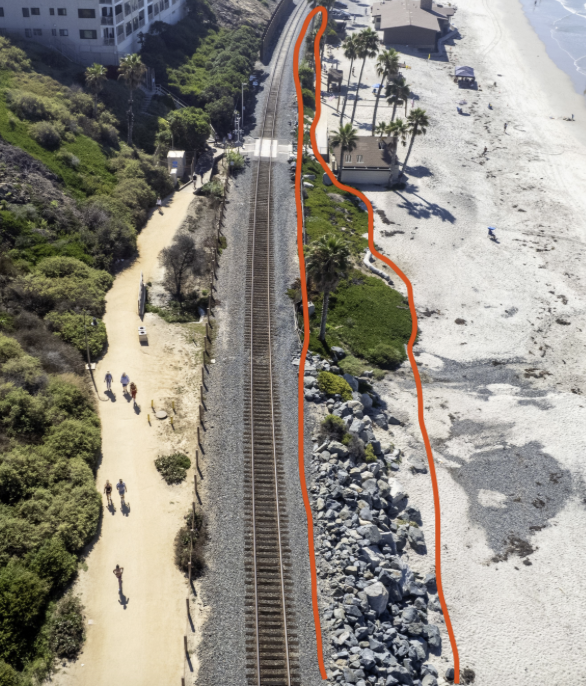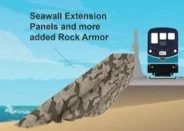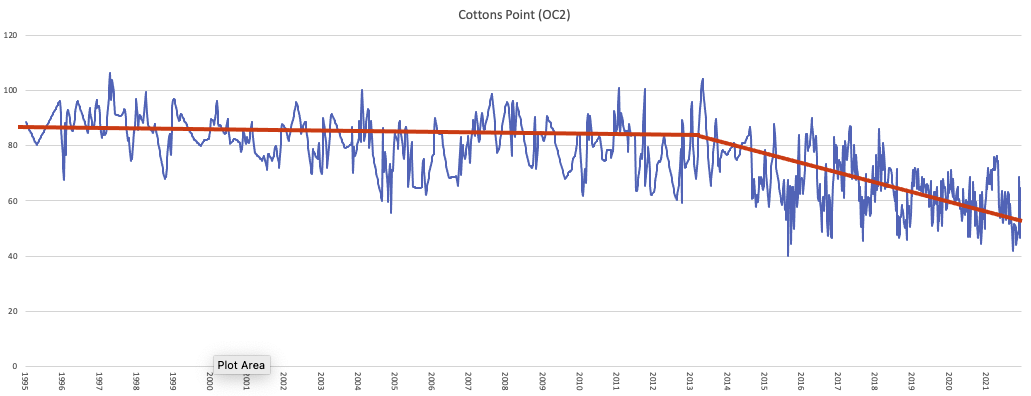Seawalls and Revetments
Seawalls, often constructed to protect coastal infrastructure from the erosive forces of waves, ironically contribute to erosion themselves. These concrete or rock barriers disrupt the natural flow of sediment along the shoreline, leading to the depletion of sand that would typically replenish beaches. As waves crash against the sea wall, they reflect back with increased energy, intensifying erosion at its base and scouring the adjacent beach. Over time, this can result in a narrowing of the beach and scouring of the adjacent beach and even the disappearance of sandy areas altogether, leaving behind barren stretches of rock.
Despite their intention to protect coastal infrastructure, sea walls can ultimately create a cascade of unintended consequences, including accelerated erosion. Thus, coastal management strategies must consider the long-term implications of sea wall construction and explore alternative approaches that prioritize the preservation and restoration of natural coastal processes.
OCTA’s revetments have increased erosion on our beach
The photos below show both vegetated and non-vegetated portions of OCTA’s rock rubble revetment.
OCTA’s current plan is more rock revetment and seawalls
This image is from OCTA’s 2021 “Rail Defense Against Climate Change” representing their current approach to stabilizing the tracks. This illustrates two types of seawalls: there is the rock revetment placed directly on the beach, and also a 12-18-foot high vertical concrete seawall on the western side of the tracks.
The rock revetment prevents waves from undermining at the base of the tracks. The purpose of the vertical concrete seawall is to keep waves from washing over the tracks; the waves wash away the small rocks, known as ballast, that help keep the tracks in place.
OCTA should protect its tracks with a wide sandy beach
For the last 120 years, the railroad has been protected from the erosive power of the ocean by the presence of a wide sandy beach. The solution to its current dilemma is simple: bring back that wide sandy beach. See our section “GAMEPLAN” for more information on how you can help make this a reality.
OCTA SEAWALLS HAVE INCREASED EROSION ON OUR BEACHES
In a March 11, 2024 presentation, OCTA staff stated that, in their opinion, the existing seawalls that OCTA has established on San Clemente’s beaches are not causing degradation and erosion of the coastline, citing the fact that the revetment existed for many years without apparent impact to the beach, and the beach erosion has only recently accelerated.
The following facts should be noted:
1. Data from Kahl et al (2024) clearly show that the beaches at the northern and southern ends of San Clemente have been slowly narrowing over the past few decades (with significant seasonal swings). The cause of this narrowing is a lack of sediment supply.
2. Kahl et al (2024) also show that the rate of beach erosion at the southern end of San Clemente accelerated around 2013-2015. This acceleration occurred when the beach width reached a critical point where storm waves began to interact with the seawall. This is a well-known phenomenon as demonstrated in the following literature review.
The diagrams below show beach width at two locations in south San Clemente measured from LIDAR data (data provided by UCI Flood Lab). Note the several decades of gradual narrowing followed by rapid acceleration beginning around 2014 when the beach narrowed enough such that storm waves began to interact with the seawall.
THE SCIENCE ON SEAWALLS
The scientific literature has found, on numerous instances, that seawalls do not impact beaches as long as the beach is wide enough so that storm waves do not interact with the seawall. Once that critical width is reached, the seawall will cause increased degradation and erosion of the beach until no beach remains.
Tait and Griggs (1991) wrote an extensive report for the U.S. Army Corps of Engineers titled “Beach Response of the Presence of a Seawall.” They found the following effects of beach response observed at seawalls:
1. Scour trough – a linear trough fronting a seawall
2. Deflated profile – the lowering of the beach face
3. Beach cusps – crescentic embayments on the beach face
4. Rip current trough – a trough crossing through the surf zone
5. End scour – erosion of the unprotected beach adjacent to the end of the seawall
At the southern end of San Clemente, deflated profile, beach cusps, and end scour are very evident features associated with OCTA’s seawall.
Tait and Griggs (1991) go on to conclude that “the overriding factor in the impact of a seawall on a beach is the long-term trend in the position of the shoreline. If a shoreline exhibits an erosional trend, and some segment of that shoreline is fixed in position by a seawall, then the beach will eventually disappear in front of the wall. On a stable shore, the wall will only affect the beach when a large storm or large seasonal fluctuations in the position of the shoreline exposes it to wave attack. McDonald and Patterson (1985) conclude that on an eroding coast, the wall will move progressively further out on the beach profile until no beach exists. Dean (1986) points out that on an eroding shore, an isolated wall can project into the surf zone and block littoral drift. The impact on the beach gets progressively greater with time. Everts (1985) states that on a coast where the shoreline is stable or slowly advancing, a PD (protective device or seawall) is necessary for shore protection only when reversible changes in beach width exceed the maximum beach width. On a retreating coast, the influence of a PD on coastal processes increases as the beach width decreases. Waves will have an increasing access to the PD. Water depth will begin to increase and wave height at the PD will increase. Conversely, where ample littoral sediment exists and/or littoral drift rates are large, the potential for seawall impacts is greatly reduced.”
Kraus (1988) conducted an extended literature review and found that beach change near seawalls is similar to that on beaches without seawalls, IF A SEDIMENT SUPPLY EXISTS. Erosion at seawalls manifests as more localized toe scour and end effects of flanking and impoundment.
Medellin et al (2015) studied the influence of seawalls on post-nourishment beach profiles in Yucatan Mexico and found that they significantly modify coastal dynamics, with walled beach segments showing a net loss of sediment compared to non-walled segments.
Melius and Caldwell (2015) conducted an extensive review of seawalls in California and concluded: While armoring structures may temporarily protect property from encroachment by the sea, armoring ultimately undermines its intended purpose by accelerating the loss of beaches and coastal habitats. Armoring California’s shoreline will ultimately result in the total loss of public beach seaward of the structure, limit beach access, and deny various forms of coastal recreation in the area influenced by the shoreline armoring.24 In addition, these structures are often expensive to install, require costly ongoing maintenance, and can exacerbate flood risk by disrupting natural floodplain processes. Because seawalls cause increased erosion on neighboring properties, the construction of one seawall will often lead to the need for others.
Walling et al (2016) studied the effects of seawall and property damage due to Hurricane Sandy in New Jersey and found that shoreline segments with a seawall experienced more erosion in front of the seawall.
Beuzen et al (2017) conducted a physical model study of the response of shorelines to rising sea level in the presence of seawalls. They found that seawalls altered the evolution of the equilibrium profile, causing increased lowering of the profile adjacent to the structure. The seawall concentrates the erosion in the area adjacent to the seawall, resulting in enhanced and localized profile lowering. However, if sufficient beach width is present so that storm waves do not interact with the structure, there is no effect of the structure on the beach profile.








